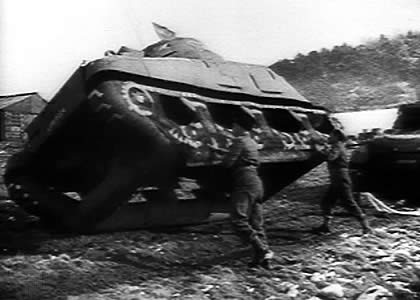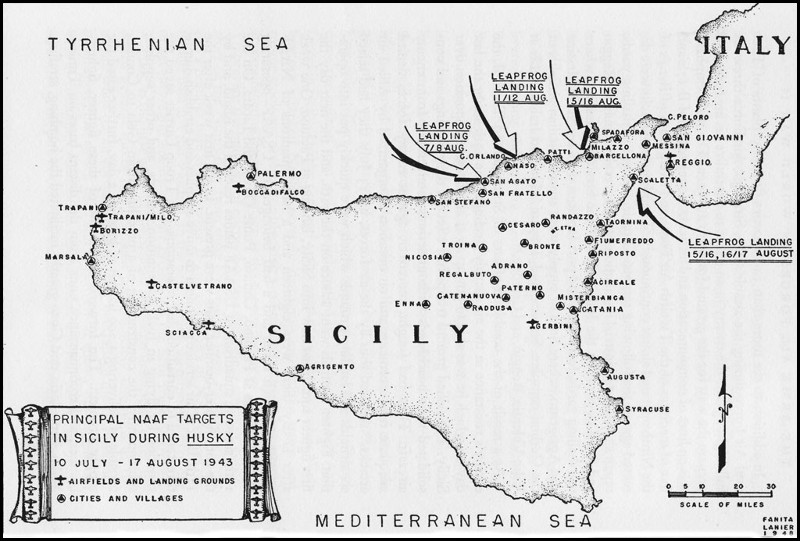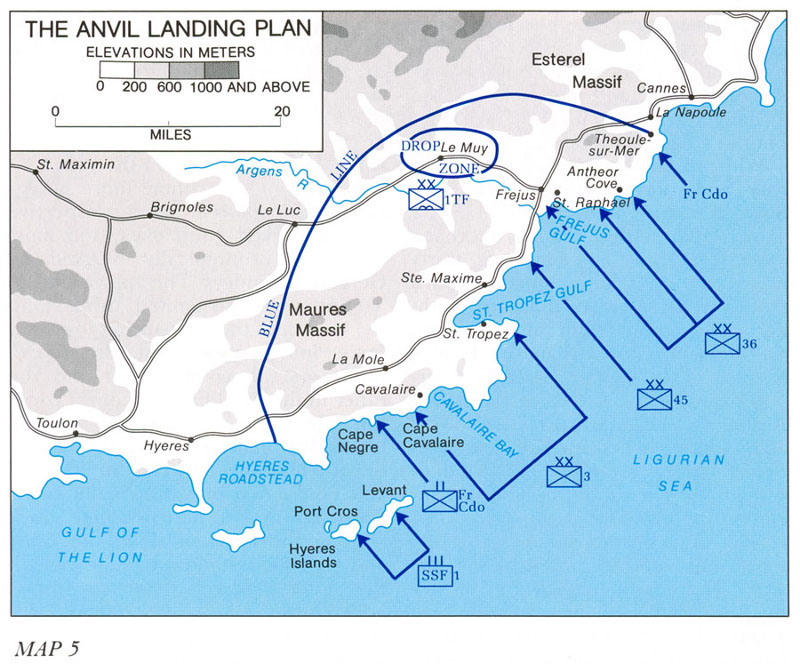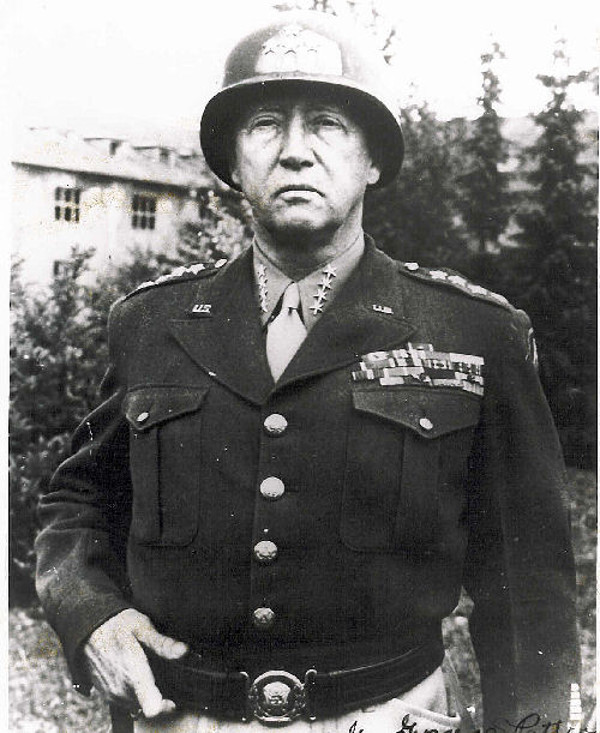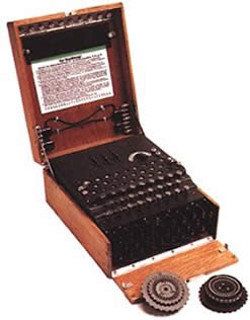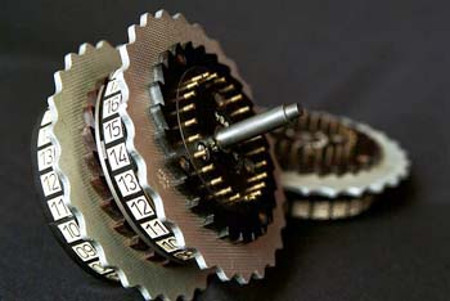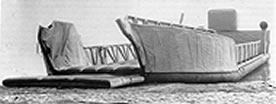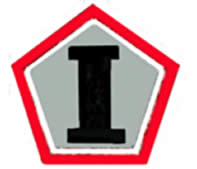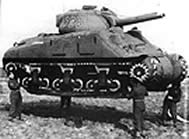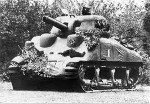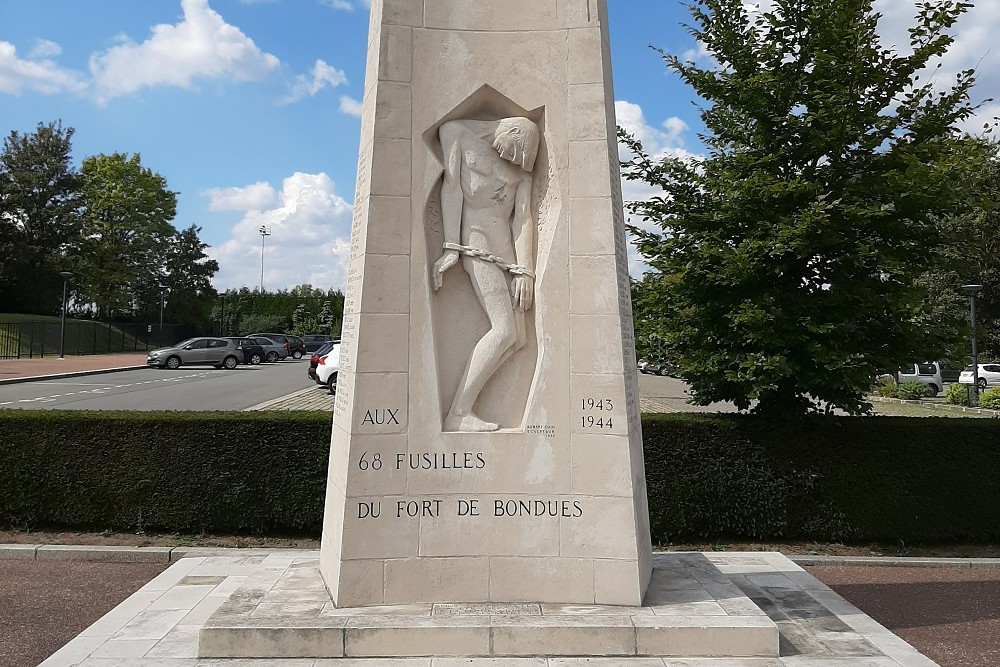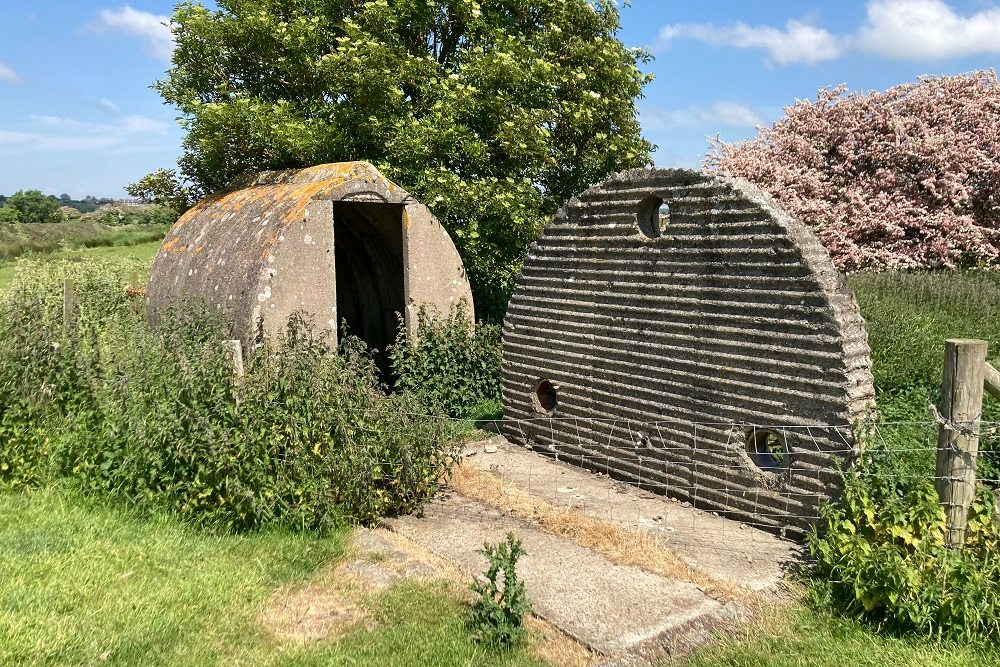Target of the operation
During the Teheran Conference in November 1943 the "Big Three", Roosevelt, Churchill and Stalin, approved of a plan of deception.Germany was to be deceived as to the place, time and means for the future landing in Normandy, codenamed Overlord. Misleading an enemy is always part and parcel of any military plan, but never in history was this conducted on such a vast scale and with such success as in the deception plans for Normandy. This gigantic plan of deception was originally named Jael after a person in the Old Testament. This however was soon rechristened to operation Bodyguard. This name was chosen because of a remark by Winston Churchill: "In wartime, truth is so precious that she should always be attended by a bodyguard of lies."
Aim of the deception
The entire Atlantikwall stretched from Norway to the south of France.German troops were housed in reinforced structures at the coast in order to be able to defeat an allied landing on the beach. The main targets of Bodyguard were to tie down German troops far away from the actual landing sites and to convince them that the landing in Normandy was a distraction for the real invasion that was to take place 45 days later. These main targets resulted in the following strategic aims, the Germans were to be convinced that the following allied actions were planned:
- Invasion operations were to be started in the spring of 1944 with a combined attack on Norway by British, American and Soviet troops.
- The allies would continue their operations in Italy where they already were active, and expand these operations to the Balkan and Greece.
- If there would be an invasion in France this would occur near the Pas de Calais and certainly not before July,1944.
- If landings on the French shore would take place, they would be a distraction for the real invasion near the Pas de Calais.
Germany's expectations
The personal vision of Adolf Hitler was an important part in the plans of deception. One of his solid convictions was that Imperial Germany had lost the Great War among others because her navy did not have access to harbours outside Germany, with the exception of minor harbours on the Belgian coast.Next to the access to Swedish iron ore via Narvik the ice free harbours and fjords of Norway were important considerations for the German attack in April, 1940. The Germans beat the allied convoys that were already on their way to conquer Norway. Up until the very end of the war a sizeable force of some 200,000 Germans and during the first years even an understrenghth armoured division were stationed in Norway for the protection of her harbours.
Hitler was convinced that the allies would possibly attack Greece because of the weaker allies he had on the Balkan, like Hungary, Croatia and Romania. Furthermore Hitler was convinced that the landing on the west coast of Europe would take place at the Pas de Calais.The distance to be covered by the ships was at its smallest there and this would also give the best possible protection on sea and in the air. The supply routes would be shortest here.
Operation Bodyguard was divided into several smaller operations. Fortitude and Zeppelin were the most important of them.These two were indeed crucial for the deception concerning the landing in Normandy. They were also the biggest in terms of scale and resources.
Zeppelin was the misleading campaign to make the Germans believe that an invasion would take place in Greece and the Balkan.
The even more important operation Fortitude was divided in three areas:
- Fortitude North was the threat of an allied invasion in Norway and consequently an advance through Denmark into Germany.
- Fortitude South I was a fake invasion directed at the coast of the Pas de Calais or Strait of Dover:
- Fortitude South II was the deception by radio traffic after the troops had landed in Normandy to make the Germans believe that the real attack would take place at the Pas de Calais.
Definitielijst
- invasion
- Armed incursion.
Images
Zeppelin
The main goal of operation Zeppelin was to bind German troops in the Balkan and Greece so that these troops could not fight against the actual landings. This plan was also used in the framework of operation Husky, the allied landing on Sicily in July,1943. The operatie Zeppelin as a whole was conducted not only by British and American troops but even by Soviet forces. The deceptive actions were not intended to make the Germans believe that one large landing would take place, but that the effort would be divided in smaller landings or combinations of these landings. These were landings on Crete, the Peleponessos, Albania, the coast of Yugoslavia and, in concert with the Soviets, the coasts of Rumania and Bulgaria.
Adolf Hitler thought that an allied landing would take place here for diverse reasons.His allies in the area were Bulgaria, Croatia, Hungary and Romania. These were not feared opponents for Hitler's enemies.Besides, Romania supplied one third of Germany's oil. In order to strenghten Hitler's suspicion the rumour was spread that general George Patton was preparing an attack on Triest in Italy. This had as its consequence that the German general Erwin Rommel was sent south. When nothing happened, Rommel was sent to the Atlantikwall.
The deceptive landings were planned around 23 March,1944, when the moon was full. At the same time, the Soviet offensive directed against Romania and Bulgaria would start. As 23 March got nearer, the fake landing was postponed due to a shortage in landing craft that by now had been sent to Great Britain for the landing in Normandy. A new date was chosen for the end of May, so that this would be close to the actual Normandy landing.
Politically the actions were difficult, because it was pretended that the landing would be executed by the British Twelfth Army, stationed in Egypt. The Polish III Corps was part of that army. This III Corps consisted of the 2nd Armoured Division and the 7th Infantry Division which were supposed to attack at Durrës, a harbour in Albania. Furthermore the US Seventh Army would land at Dalmatia and Istria, while in reality it would land during operation Anvil/Dragoon, the landing in Southern France. These two Polish divisions didn't even exist and were fabricated by British espionage services.
At the beginning of 1944 the allies supported the partisans in Yugoslavia under Tito. When he was briefed about the plan for the invasion with ,for a large part, Polish troops he was vehemently against it, because of Polish possible interests in the area. Tito ofcourse could not be told that the whole invasion was a scam and that he did not need to worry, for that might have jeopardized the entire operation.
Conclusion
The entire deceptive action might be called a great succes due to the removal of mobile units from France to the Balkan. Germany sent the Panzer Lehr Division to Romania. The Panzer Lehr remained there with an infantry division during April,1944. In May, however, the division was sent back to France. Operation Zeppelin was successful, but lacked the scale to match the success of Fortitude South.
Definitielijst
- Infantry
- Foot soldiers of a given army.
- invasion
- Armed incursion.
- offensive
- Attack on a smaller or larger scale.
- operatie Zeppelin
- Duitse codenaam voor het plan Sovjetleider Josef Stalin te vermoorden. Het plan werd ook daadwerkelijk uitgevoerd ,maar liep uit op een volkomen mislukking.
- operatie Zeppelin
- Geallieerd plan om de Duitsers de illusie te wekken, dat er in het voorjaar van 1944, amfibische landingen in Zuid-Frankrijk en de Balkan zouden plaatsvinden.
Images
Operation Fortitude-North
The goal of Fortitude-North was to make the Germans believe that a strong army would land in Norway. In this way, troops would be tied down which in this manner could not participate in real battle. In all, 200,000 Germans were in Norway.
The secret agents
Counter espionage was frequently used in the Fortitude deceptions.This was also called double espionage. These were spies that had been trained by the German Abwehr, the German intelligence service and that had been sent to Great Britain for spying activities. These spies however offered their services to the British intelligence service MI5 and were redeployed as double spies. In this way they gave the Germans false information. Through the messages of these double spies the German intelligence service received the impression of an army in Scotland that stood poised to invade Norway.
The intelligence the double agents provided consisted for a large part of non existing units, units that were elsewhere or units that were still in the process of being formed and trained. The Abwehr , in order to check the validity of a message, always wanted the confirmation of another agent who was also a double spy. From 1942 onwards, every German spy in Great Britain was a double agent. The British could make the Abwehr believe virtually anything they wanted. Another way in which the Germans checked their information was eavesdropping and decoding of radio messages that the British and Americans transmitted.
Radio deception
An important part in the Fortitude plan was to deceive the enemy by creating continuous traffic on the radio. This radio traffic was about units that didn't exist or units that were somewhere else. Next to army units ,naval forces that were to support the invasion and air force units that would bomb the enemy beaches were "created". In this way the credibility of the deception was increased.
The allies had managed to decipher the enemy Enigma encryption machine and thus could read practically all German messages. In this way they could check if the Germans bought the deception and could respond according to new developments by sending new messages.
The army units
The entire plan was based on the British Fourth Army that was to conduct the invasion of Norway. This army consisted of various British and American units that for a part really existed and that for a part were made up. Of the fictional Fourth Army in Scotland and Northern Ireland, only the American XV Corps really existed. It consisted of the US 2nd,5th and 8th Infantry Divisions, the British 52nd (Lowland) Infantry Division and the 113th Independent Infantry Brigade with Norwegian elements.
As part of the Fourth British Army the headquarters, British VII Corps, US 55th Infantry Division and the three Ranger batallions were competely fictional. The other mentioned units did camp in Scotland and Northern Ireland, but would be transported to southern England just prior to D-Day to be deployed at the actual landings. For all units, be it existing or fictional, busy radio traffic was kept up. On a daily basis, ammunition, drinking water, socks, fuel, food, etcetera was ordered in order to make the picture as credible as possible for the Germans.
Conclusion
The campaign for deception to make the Germans believe that a landing was imminent in Norway did not succeed in drawing more troops towards Norway. It did, however, succeed in keeping the 200,000 Germans in place. They were not transported to other areas. In the first years there was even an armoured division in place, albeit an understrenghth one. Fortitude North together with Fortitude South and Zeppelin ensured that Germany had a totally wrong concept of the place and time of the invasion and the troops that were to conduct the invasion.
Definitielijst
- Abwehr
- Term used for the German military intelligence unit during the WW1 and WW2. From 1935 onwards under command of Admiral Wilhelm Canaris. The organisation often came into conflict with other secret services such as the SD and the Gestapo. During World War 2 under Canaris frequently a source for conspiracies against the Nazi regime until in 1943 a major conspiracy by a number of prominent members of the Abwehr was discovered and the Abwehr was placed under command of Himmler. After the assassination attempt on Hitler in 1944, Canaris was discharged and the Abwehr was dissolved. The conspirators and Canaris were prosecuted and in 1945 they were executed atc oncentration camp Flossenburg.
- Brigade
- Consisted mostly of two or more regiments. Could operate independently or as part of a division. Sometimes they were part of a corps instead of a division. In theory a brigade consisted of 5,000 to 7,000 men.
- D-Day
- The day of the long awaited invasion of western Europe in Normandy, France, 6 June 1944. After a long campaign of deception the allies attacked the coast of Normandy on five beaches to begin their march on Nazi Germany. Often explained as Decision Day, though this is entirely correct. The D stands for Day as generally used in military language. In this case it means an operation beginning on day D at hour H. Hence “Jour J“ in French.
- Enigma
- Cryptographic (de)coding machine used by the Germans during World War 2. The code was broken by the British with help from the Poles. Much German military information was known to the British in advance. This was a huge aid to the war effort.
- Infantry
- Foot soldiers of a given army.
- invasion
- Armed incursion.
- Ranger
- American name for a specially trained soldier (similar to commando).
Images
Fortitude South I
The first part of the Fortitude deception plan was aimed at keeping German troops away from Normandy and to make sure that they were stationed at the nearby Pas de Calais. Fortitude South was more intricate than Fortitude North. This was the case because the plan was much larger in scale and had to keep into account German airplanes that reconnoitered the south of England. On top of that the allies wanted the Germans to believe that the actual invasion in Normandy was nothing but a diversionary attack for the real invasion later on in the Pas de Calais. The second part of Fortitude South were the deceptive actions after the real invasion on D-Day.
The entire plan centered on a fake army, led by General George Patton, that was to lead the "real" assault across the Channel. Patton was the general the Germans feared and respected most. Patton however had temporarily been placed at half-pay for the unfortunate slapping incident in Sicily. The fiery Patton had threatened and hit two soldiers in a field hospital who were suffering from battle fatigue. The forces commanded by Patton were the First US Army Group, abbreviated to FUSAG.This gigantic Army Group was camped in southern and south eastern England and consisted of a huge number of non existing units. Some existing units were in the Army Group, however these did not belong to FUSAG and were actually follow up troops that were to sail for Normandy after the actual landings on D-Day by 21st Army Group.
As was the case with Fortitude North and Zeppelin, the most important way to convey information to Germany and the German intelligence services was through double agents, which were also called the GARBO-network.
A large and important part of the deceptive actions next to the double spies was radio traffic. Through all sorts of phoney radio traffic the Germans were made to believe that various divisions were active in Great Britain. This traffic,combined with the messages of the double agents and the use of inflatable tanks and dummy landing craft made Fortitude South very credible for the Germans. The dummy paratroopers that would cause much confusion on D-Day were also part of the plan.
In order to keep the Germans off balance concerning the real time of D-Day, a good actor much resembling Bernard Montgomery was used. This actor went to Gibraltar at the end of May,1944 for "important talks", while the real Montgomery at that very moment commanded the 21st Army Group that was to spearhead the assault in Normandy. Another fact that contributed to the German's mistake was that during the months prior to the invasion, more than twice the weight of bombs was dropped in the Pas de Calais area than in Normandy.
The fact that Germany believed in the deceptions may be clear. This especially is evident when one realizes that during the first crucial days of the landings and the establishing and uniting of the bridgeheads not a single unit was ordered to leave the nearby Pas de Calais area for Normandy. All deceptions perfectly suited the Germans own predictions and Hitler's conviction as to the place and date of the invasion.
Even after D-Day, the intelligence services continued their campaign of deception. This second part was called Fortitude South II..
Definitielijst
- D-Day
- The day of the long awaited invasion of western Europe in Normandy, France, 6 June 1944. After a long campaign of deception the allies attacked the coast of Normandy on five beaches to begin their march on Nazi Germany. Often explained as Decision Day, though this is entirely correct. The D stands for Day as generally used in military language. In this case it means an operation beginning on day D at hour H. Hence “Jour J“ in French.
- invasion
- Armed incursion.
- paratroopers
- Airborne Division. Military specialized in parachute landings.
Images
Fortitude South II
After 6th June 1944, the second phase came into being. Its target was to tie down the strong German formations in the Pas de Calais area.The Germans were made to believe that the real attack that was to be conducted by FUSAG would come at D-Day + 45 days.
In order to persuade the Germans of this impending attack more than 260 inflatable fake landing craft were made. They were supposed to be discovered by German air reconnaissance. Together with the fake radio traffic and the messages of the double agents this served to convince the Germans that the real landings at the Pas de Calais were still to come.
The German army at the Pas de Calais in July, 1944, was even stronger than it had been at D-Day. The shifting of strong German formations to the real front in Normandy only happened after that the allies had linked up their beachheads and had expanded much further inland. The battle for Normandy was already lost for the Germans at that time although they would continue to resist with their usual tenacity.
Germany's intelligence was never so flawed as before and after D-Day. During many months an army of a million men, a fleet of 5,000 ships and a huge air force were not noticed by the Germans. Even after that the armada sailed out of her ports, Germany did not see the imminent danger. In a separate action, hundreds of allied bombers dropping chaff simulated a fleet that headed for the Pas de Calais area. Up until today various documents and reports on Bodyguard remain secret. At Colleville-sur-mer, the location overseeing Omaha Beach where thousands of US soldiers were buried after the war, a record from Eisenhower is interred that will only be dug up in 2044. In the American military academy at West Point, the largest campaign of deception ever is still being studied. For an important part, Overlord succeeded because of the succes of Bodyguard.
Definitielijst
- D-Day
- The day of the long awaited invasion of western Europe in Normandy, France, 6 June 1944. After a long campaign of deception the allies attacked the coast of Normandy on five beaches to begin their march on Nazi Germany. Often explained as Decision Day, though this is entirely correct. The D stands for Day as generally used in military language. In this case it means an operation beginning on day D at hour H. Hence “Jour J“ in French.
Images
Information
- Article by:
- Frank van der Drift
- Translated by:
- Peter ter Haar
- Published on:
- 22-02-2015
- Last edit on:
- 30-09-2024
- Feedback?
- Send it!
